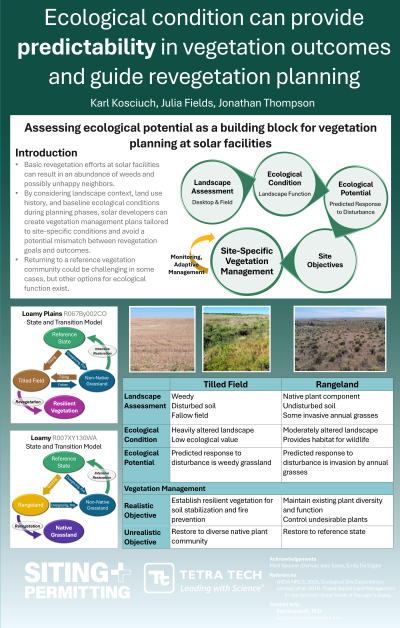Assessing ecological potential as a building block for revegetation planning at solar facilities


Karl Kosciuch, PhD
Wildlife Program Manager
Tetra Tech, Inc.
Portland, Oregon
Poster Presenter(s)
The vegetation community at a solar facility is shaped by complex interactions between landscape setting, land use history, and baseline vegetation conditions. Further, construction practices and revegetation methods can result in unexpected or undesirable conditions especially in arid environments where invasive weeds are present. In many instances pre-construction data are sparse or lacking resulting in potential mismatches between revegetation goals or commitments and vegetation community outcomes. Initiatives including biodiversity gains, agrivoltaics, and ecovoltaics require planning from the outset and reversing deteriorating vegetation conditions to meet these goals can be challenging and expensive. In this presentation we demonstrate that by using landscape data with ecological site condition information to develop revegetation approaches the vegetation and biotic community can be anticipated and goals calibrated to a site’s ecological potential. We suggest that understanding the ecological state and how the plant community could respond to disturbance can help focus revegetation efforts in areas with high ecological potential to support diverse plant, insect, and animal communities. In contrast, revegetation management planning in areas with high weed prevalence and high fire return interval could include mowing, soil stabilization, and fire risk management. Overall, the ecological potential of a solar site occurs on a continuum from highly disturbed to an intact native landscape and early identification of how the site could function during operation can help align expectations for revegetation and site management.
